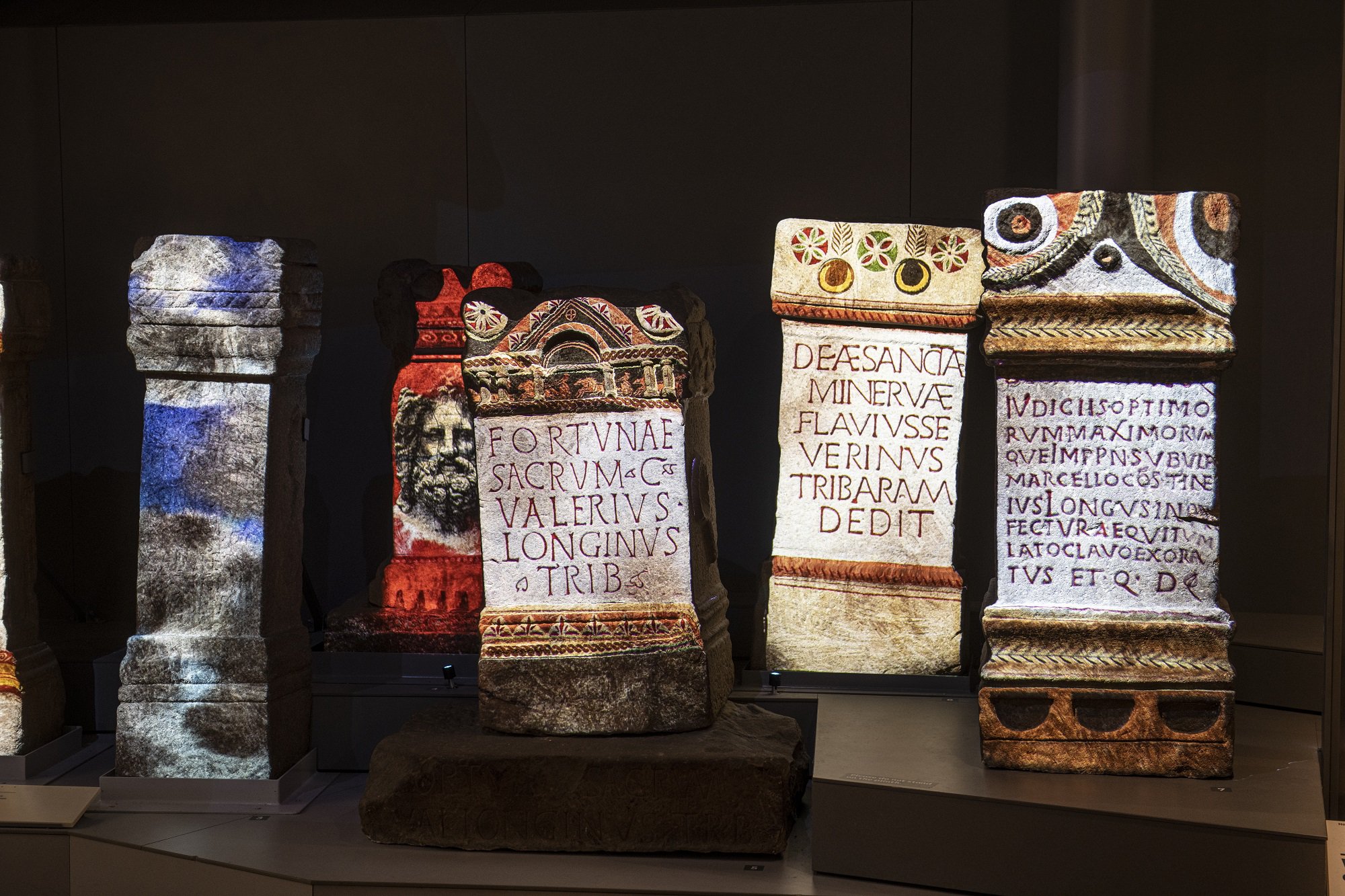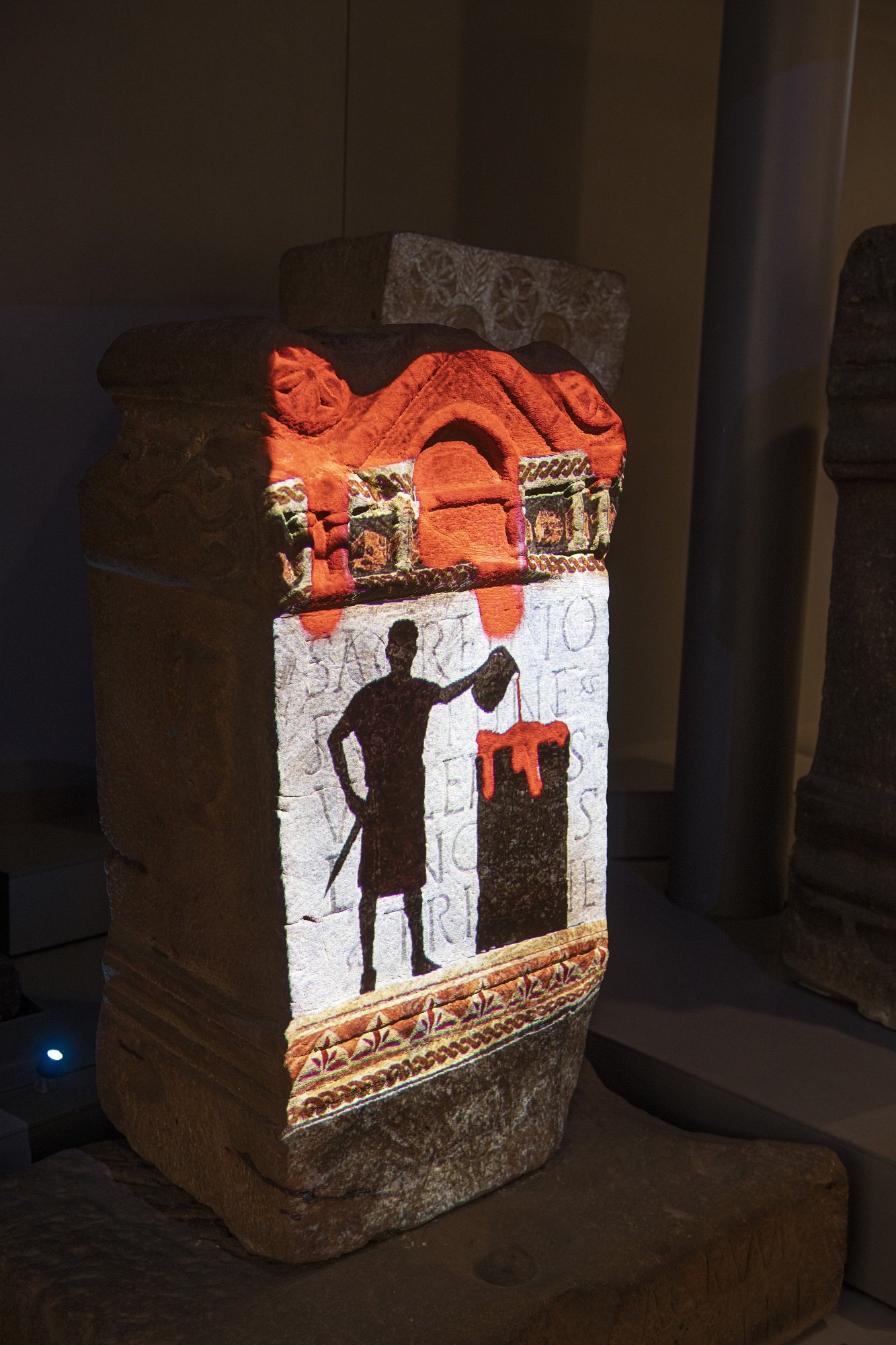Roman altars reimagined in vivid colour at the Great North Museum: Hancock
27 October 2021
Roman Britain in Colour is made possible with The National Lottery Heritage Fund. Thanks to National Lottery players, we have been able to reimagine seven Roman altars in vivid colour.
 Image: detail of the Roman Britain in Colour display
Image: detail of the Roman Britain in Colour displaySeven Roman altars at Newcastle University’s Great North Museum: Hancock have been transformed in vivid hues thanks to an innovative creative project called Roman Britain in Colour. The display is a collaboration between the Museum and Hadrian’s Wall Community Archaeology Project (WallCAP), working alongside creative studio NOVAK.
Funded by The National Lottery Heritage Fund, with money raised by National Lottery players, WallCAP aims to improve the heritage of Hadrian's Wall, by understanding the risks to the monument, and working with local communities to identify, secure and protect the heritage and cultural significance of Hadrian’s Wall.
The seven altars in the display feature animated videos projected directly onto the stone surface, giving visitors a sense of how colourful they were when made around 1900 years ago.
The animations also offer artistic interpretations of the altars and the gods associated with them. For instance, the altar to Neptune, Roman god of freshwaters and rivers, was found in the River Tyne. It depicts a blue underwater scene filled with fish.
The altar to Oceanus, god of the sea, is animated with seaweed, starfish and a crab, whereas the altar to Fortuna drips with bright crimson, perhaps suggesting a ritual using wine or the blood of a sacrificed animal.
 Image: the altar to Fortuna. A soldier is shown pouring either wine or animal blood as part of a ritual
Image: the altar to Fortuna. A soldier is shown pouring either wine or animal blood as part of a ritualOther altars with new animations are dedicated to Jupiter, supreme deity of the Roman pantheon, Minerva, goddess of wisdom and strategic warfare, and Antenociticus, a native British god only found at Condercum Roman Fort – present-day Benwell in the west end of Newcastle.
Dr Rob Collins, Senior Lecturer in Archaeology and WallCAP Project Manager, Newcastle University, said:
“Roman altars are a great source for understanding the culture of the Roman Empire, but they can seem boring and uninteresting for people that do not know how to ‘read’ them.
“Working with NOVAK and the Great North Museum: Hancock, the altars come alive and invite you to look more closely at the artistry and information that they hold.”
Andrew Parkin, Keeper of Archaeology at the Great North Museum: Hancock, said:
“We’re used to the look of sandstone altars and reliefs in museums but we forget that they were originally painted in bright colours. The paint has been lost over the centuries but researchers have found trace amounts of pigment using ultraviolet light and x-rays.
“These new projected animations really make the altars stand out and add greatly to the Hadrian’s Wall gallery in the museum. The team at NOVAK have done a fantastic job in creating the artwork and mapping the projections precisely onto the stones.”
Anyone interested in volunteering for the WallCAP project can register at wallcap.ncl.ac.uk. Volunteers receive regular updates to alert them of forthcoming opportunities and events to investigate and protect the Wall.
The Roman Britain in Colour display can be found in the Hadrian’s Wall gallery at the Great North Museum: Hancock. The Museum is open daily with free entry, although donations are welcomed. Visitors can plan a trip at greatnorthmuseum.org.uk.
Media enquiries
Please contact Jonathan.Loach@twmuseums.org.uk


